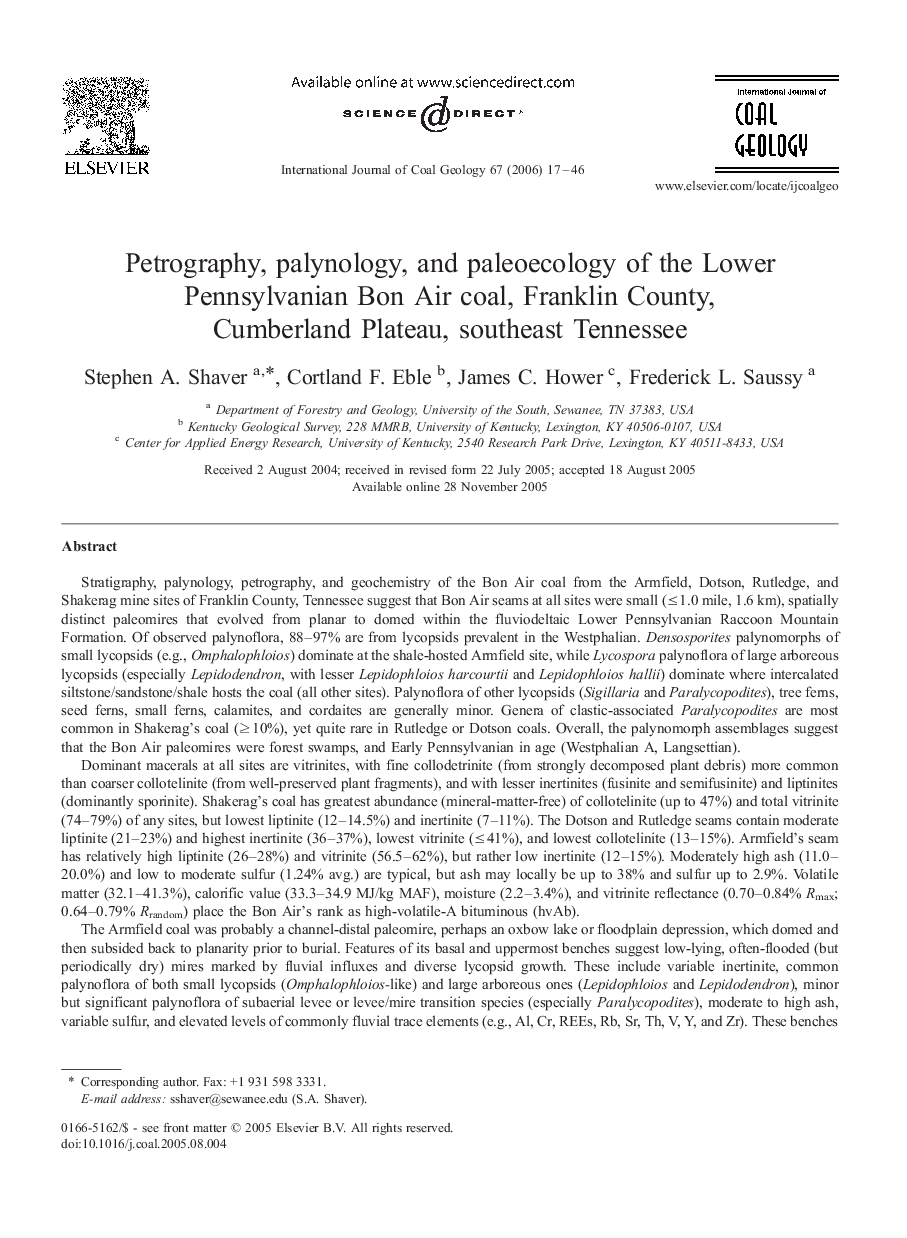| Article ID | Journal | Published Year | Pages | File Type |
|---|---|---|---|---|
| 1754440 | International Journal of Coal Geology | 2006 | 30 Pages |
Abstract
Similar data at Shakerag suggest that its mire also grew from planar to domed. However, more abundant Paralycopodites, a kaolinite-poor but quartz-and-illite-rich underclay, benches alternately ash-rich and ash-poor, and an upper bench truncated by channel sandstone, suggest that it was channel-proximal and prone to intermittent clastics. It is unclear if it returned to planarity prior to burial. The mires at Dotson and (especially) Rutledge, with more ferns, more inertinite, less Paralycopodites and less vitrinite, were probably topographically elevated or protractedly domed mires, more vulnerable to drought or fire.
Keywords
Related Topics
Physical Sciences and Engineering
Earth and Planetary Sciences
Economic Geology
Authors
Stephen A. Shaver, Cortland F. Eble, James C. Hower, Frederick L. Saussy,
